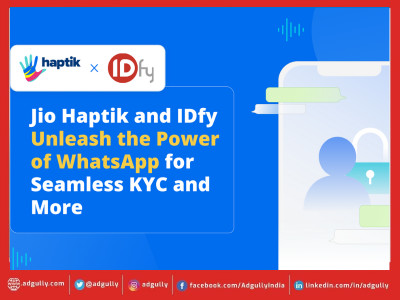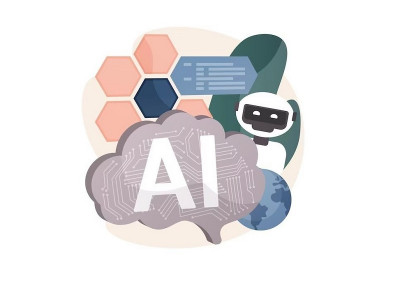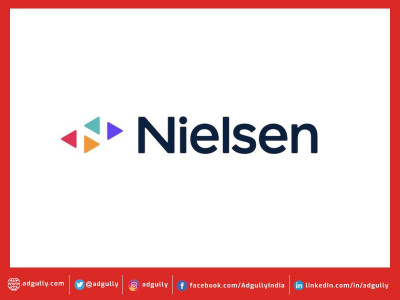Time to be analytical about it - Data Analytics for better customer engagement
Authored by Aakrit Vaish, CEO and Co-founder - Haptik
Through a billion-plus interconnected devices today, computers are growing exponentially in terms of intelligence and shrinking in size. From collating our behavior to understanding, analyzing and now influencing it, Artificial Intelligence’s impact on real human reactions is stronger than ever before. The greatest exponent of this phenomenon can be seen in our purchase behavior, with machines increasingly serving as an intuitive bridge between us and brands.
The 2018 MIT Sloan Management Review Global Executive Study and Research Report stated a few interesting insights that revealed the enormous extent to which global business ecosystems have become AI and analysis centric. More than 59% of the 1919 managers surveyed across 101 countries, as well as the 17 thought leaders interviewed, said their enterprises are using analytics to gain a competitive advantage. Most importantly, the survey revealed that the most analytically mature organizations report twice as much stronger customer engagement than others, at a fraction of the costs otherwise required to maintain and train dedicated customer engagement operations.
Predicting choices
How AI and analytics become buzzwords in customer engagement, a domain did primarily determined by how ‘human’ you can be as a brand? The answer - that is precisely what data analytics has enabled enterprises to do: appearing as ‘human’ by reading collective and personal data well enough to better predict the customer’s next move.
In fact, a crucial part of customer engagement is guessing the choices a user could make given a set of conditions, and data analytics plays a leading role in enabling enterprises make the best guesses. How? By analyzing data across hundreds of granular-level parameters, resulting in the creation of a dynamic virtual identity for a user that can think like the real person at the other end of the screen!
Google searches, product views, pages liked on social media, apps downloaded and frequently used, sites visited and a host of other factors are churned continuously to ascertain a user’s mindset. Unlike conventional Business Intelligence reports that were standalone and passive, insights generated through data analytics are akin to looking through a crystal ball into the user’s mind.
It is obvious that there is hardly any customer today that does not leave a trace of their consumption behavior across at least one online touchpoint. Through the colossal data generated every day, it is hard to identify which information segments to use for particular use cases. Now, with data analytics, enterprises have been provided with a tool that can provide recommendations about which data sets to use in predictive analytics. For instance, if a brand is trying to evaluate the effectiveness of a marketing campaign, an AI-enabled analytical algorithm will try to pick up relevant customer behavior across all channels it has been implemented in and offer a comprehensive data chart for better strategizing.
Influencing decisions
While Analytics helps to predict user choices, what if the options themselves could be controlled? AI has gone a step further and achieved the same. From being mere predictors, enterprises can now influence what the user thinks he/she ‘needs’. A significant number of ‘in-cart’ items for users across e-commerce platforms comprise products that were suggested by the platform in the first place, through analytics. This also results in user empowerment. With AI-driven recommendations and information delivery, organizations can still keep things simple but allow users to tap richer sources of data and learn answers to questions they may not have thought to ask.
Additionally, a strong analytics game adds to the pervasiveness of any business. Competition across industries is increasing every day, and products are getting far more homogeneous. Thus, analytics is the only way out to enter fresh markets and also ward off competitors. Its simple-the customer stays only if you know them better than anyone else. The biggest organizations in the world, namely Amazon and Google, are planning to diversify into everything from pharmacies to insurance, based only on their analytical power. Therefore, to deal with this growing industry convergence, enterprises need to understand analytics.
Omni-channel retail, ‘Retail 2.0’ or ‘Phygital retail’, whatever term one prefers, lies at the convergence of IoT in a world where man-machine interaction will be the new normal. For brands to effectively engage customers in such a framework, their communication strategy needs to be completely based on in-depth analytics. However, the purpose of implementing analytics needs to be identified first and foremost. Without a specific target, data analytics is like a blind elephant with a potential to cause more harm than help as teams would sit on piles of data without knowing where to begin the analysis from, and for what objective. Data science teams should include personnel with domain expertise, communications skills, and an understanding of the user experience.
In the current business context, it is imperative for enterprises to balance people, processes, and technological aspects if they are to achieve positive outcomes, by effectively applying analytics to real-world scenarios.
















Share
Facebook
YouTube
Tweet
Twitter
LinkedIn